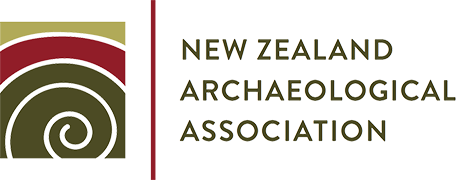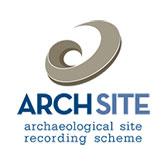The NZAA is run by a Council elected annually from its members. The current Council members for 2022 – 2023 are:
President: Chris Jennings

Chris is an Archaeologist based in Dunedin. Originally from Upper Hutt, he completed his undergraduate degree and MA at the University of Otago and his PhD at the University of Queensland. His research interests focus on Polynesian quarrying and early Māori stone tool technology, social organisation, exchange networks, and the early Polynesian exploration and settlement of New Zealand.
Over the last 18 years, Chris has worked as an archaeologist in New Zealand, Australia and Papua New Guinea.
Vice President: Danielle Trilford

Danielle is an Auckland based archaeologist, who grew up on the Kāpiti Coast and studied both her undergraduate and post-graduate at the University of Otago. She has worked across the country in research, teaching, and consulting roles. She currently works around Te Ika a Māui for CFG Heritage as a senior archaeologist undertaking consulting and research work. Her interests include the archaeology of pre-European Māori human settlement, the role and involvement of mana whenua in common archaeological process, archaeological site recording, and landscape archaeology.
Council Members:
Secretary: Jasmine Weston

Jasmine is an archaeologist based in Ōtepoti (Dunedin), with both her undergraduate and master’s degrees from the University of Otago. She currently works as a Regional Archaeologist for Heritage New Zealand Pouhere Taonga. Her research interests include exploring the impact of natural disasters such as earthquakes and flooding, on archaeological sites, as well as promoting Aotearoa’s unique archaeology to the public.
Treasurer: Jamie-Lee Hearfield

Jamie-Lee Hearfield is a Ōtautahi-based archaeologist with a BA and MA from the University of Otago. She has worked for Underground Overground Archaeology for nine years, contributing to a broad range of historical and Māori site investigations across Canterbury—including laboratory work for the Kaikōura earthquake recovery project. Her primary interest lies in 19th-century buildings, particularly in investigating how these structures reflect the past occupants
Rebecca Ramsay

Rebecca is an Auckland based archaeologist, who trained at the University of Auckland. She currently works at Auckland Council, providing archaeological input into a range of development and research projects. Her interests include climate change and archaeology, landscape archaeology and heritage management.
Emily Howitt

Emily is a Te Whanganui-a-Tara based consultant archaeologist who works across the lower North Island. She is originally from Ōtepoti, where she completed her BA and MA at the University of Otago. Emily has contracted on a variety of historical and Māori sites across the country. Her interests include archaeological planning and historical research, and the archaeology of pre-European Māori and Pākehā settlement.
Amber Aranui

Dr Amber Aranui is a Curator of Mātauranga Māori and Archaeology at the Museum of New Zealand Te Papa Tongarewa, having previously worked with the Karanga Aotearoa Repatriation Programme since 2008. Of Ngāti Kahungunu, Ngāti Tūwharetoa, she holds qualifications in Archaeology (MA) and Anthropology (BA), with a PhD from Victoria University of Wellington. Her expertise spans repatriation work involving both ancestral remains and taonga, archaeology, bioarchaeology and Mātauranga Māori (or Māori cultural knowledge systems).
Brendan Kneebone

Brendan Kneebone is a consultant archaeologist based in Tāmaki Makarau working for CFG Heritage. He completed his undergraduate and MA at the University of Auckland and has worked across the upper North Island covering the full range of archaeological sites. Brendan is also interested in archaeological research especially around the spatial interactions and communication networks of pre-European Māori and Pacific Island communities, specialising in the use and distribution of lithic material. Outside of his consulting work, Brendan is involved in various research projects across New Zealand and the wider Pacific.
Strategic Plan
In 2013 NZAA Council developed and adopted a Strategic Plan – the first for the organisation. The Plan is reviewed and updated regularly and guides the current and future direction of the Association.
The Goals of the NZAA Strategic Plan are:
- Goal 1: Maintenance and growth
- Goal 2: Promote the practice of archaeology
- Goal 3: Maintain and communicate archaeological principles and values
- Goal 4: Sustain and strengthen archaeological site recording in NZ
- Goal 5: Grow financial strength and policy capability
NZAA logo
The NZAA logo was adopted at the 2015 AGM in Paihia.
The central element is a koru, a Maori symbol that now features prominently in expressions of New Zealand identity, having become part of the nation’s visual vocabulary. The coloured elements are in earth tones and can clearly be read as stratigraphic layers with the koru as an artefact [of knowledge] to be uncovered. The koru is often used to symbolise creation or growth; in archaeology, bringing the past into the present.
The logo is a registered trademark of NZAA and can only be used with the permission of Council.
Other Positions of the Association
The following positions are appointed by the Council to help manage the various interests of the Association.
- Admin Officer
Latisha Lee - Archaeology in New Zealand Editor
Naomi Woods - Journal of Pacific Archaeology Editor
Josh Emmitt - Monographs Editor
Matthew Campbell
- Nominee to Royal Society for Skinner Fund allocation
Andy Brown - ArchSite Board of Governance Chair
Lynda Walter
- Archsite (Site Recording Scheme) Central Filekeeper
Mary O’Keeffe - Archsite (Site Recording Scheme) Representative for NZAA Membership
Leela Moses - Webmaster
Emma Ash - Social Media Co-ordinator
Kera Derbyshire - Archaeology Week Co-ordinator
TBC
If you are interested in being elected for Council or considered for any of the above positions, then don’t hesitate to contact us. The NZAA runs on its volunteer membership and without their support we cannot continue to advocate for our membership and New Zealand archaeology.




